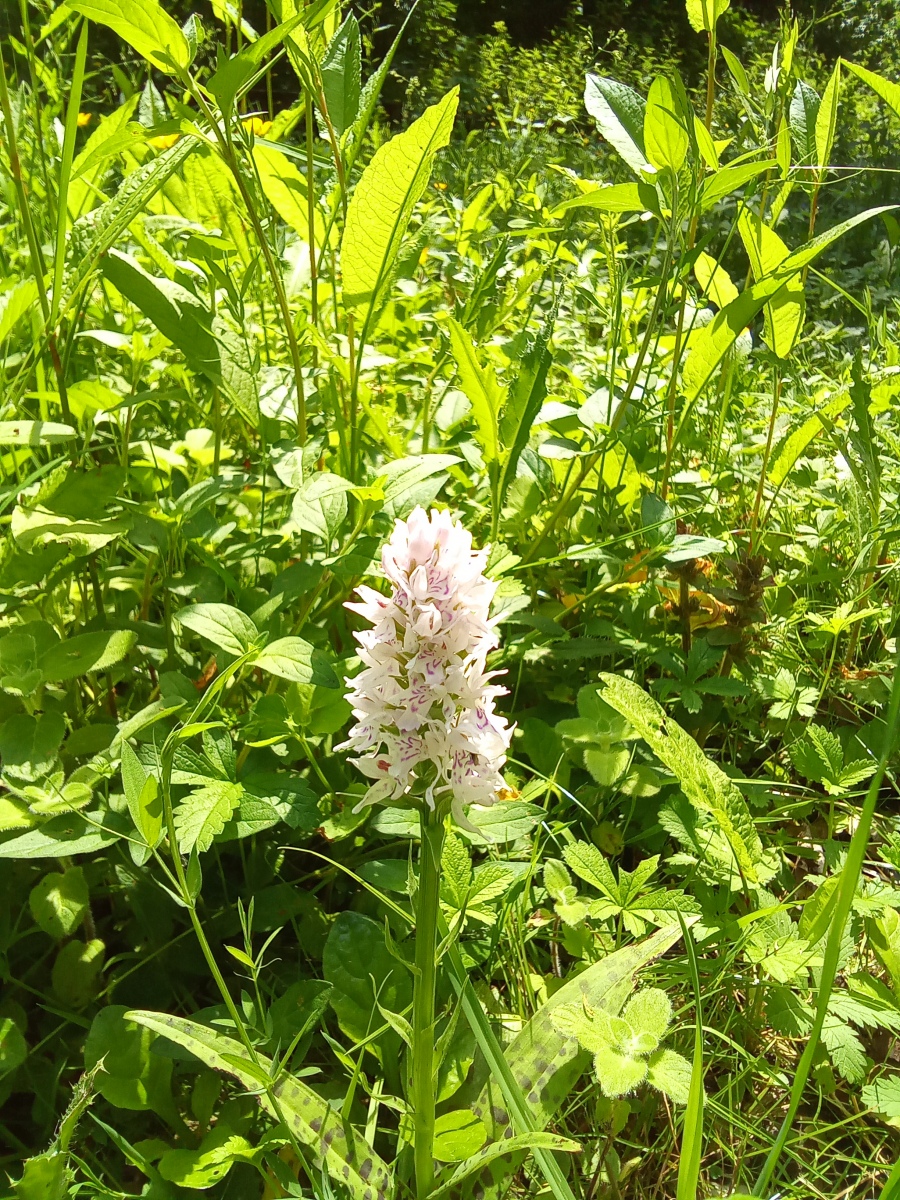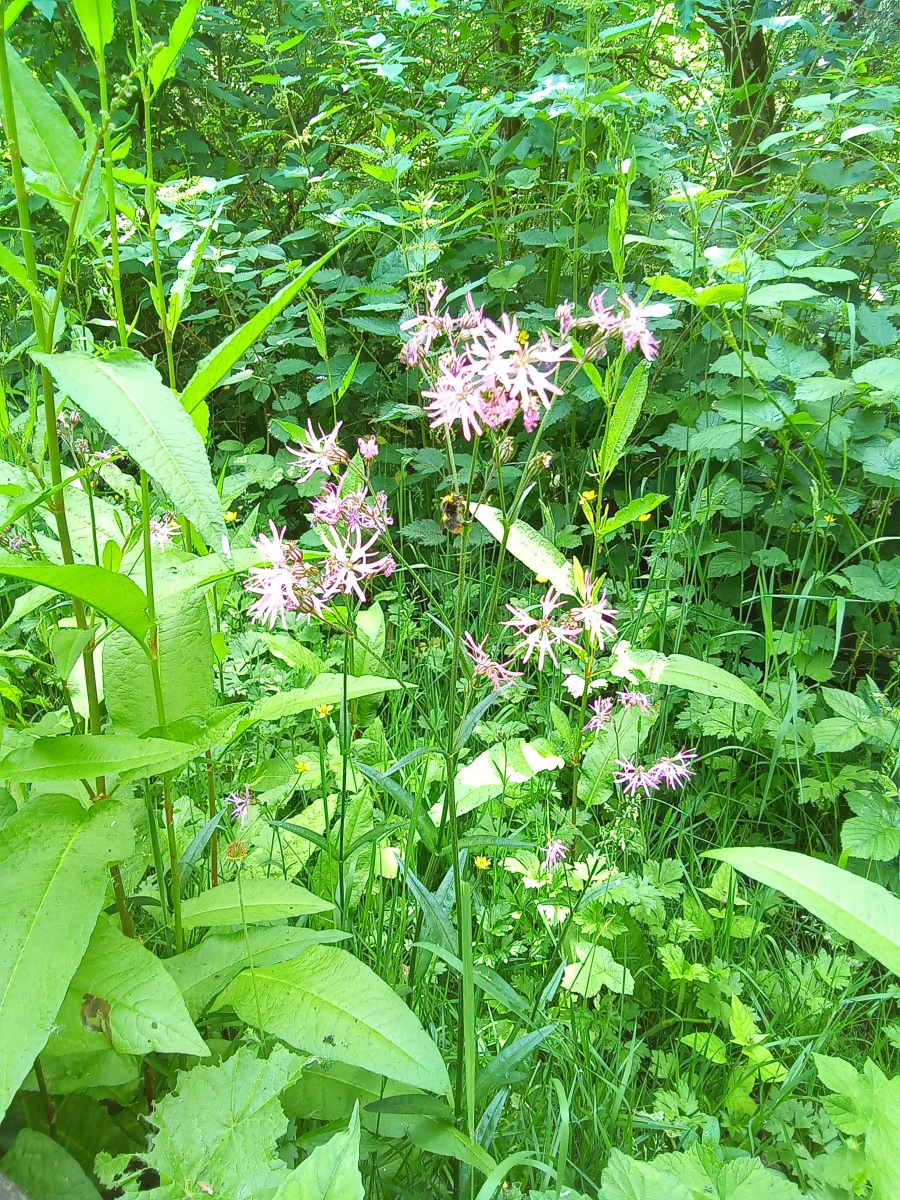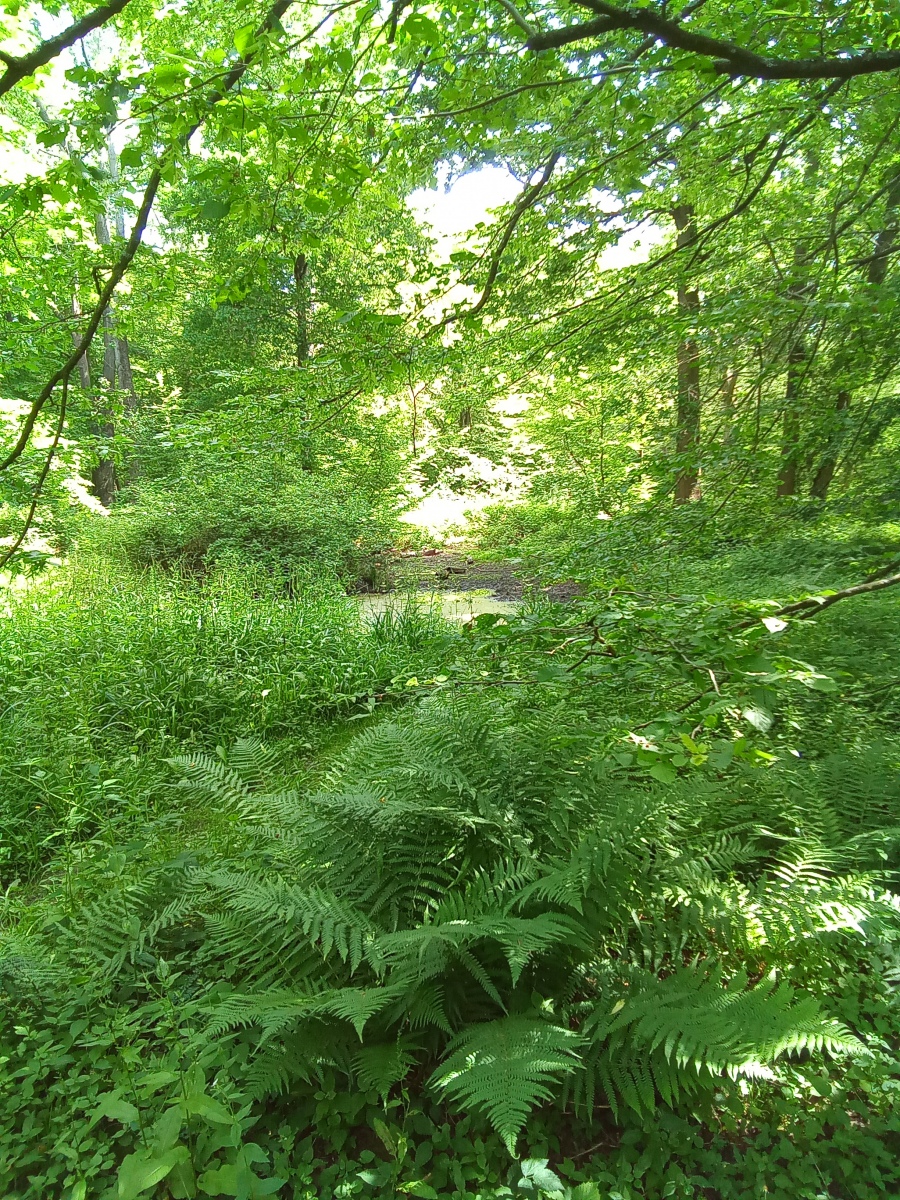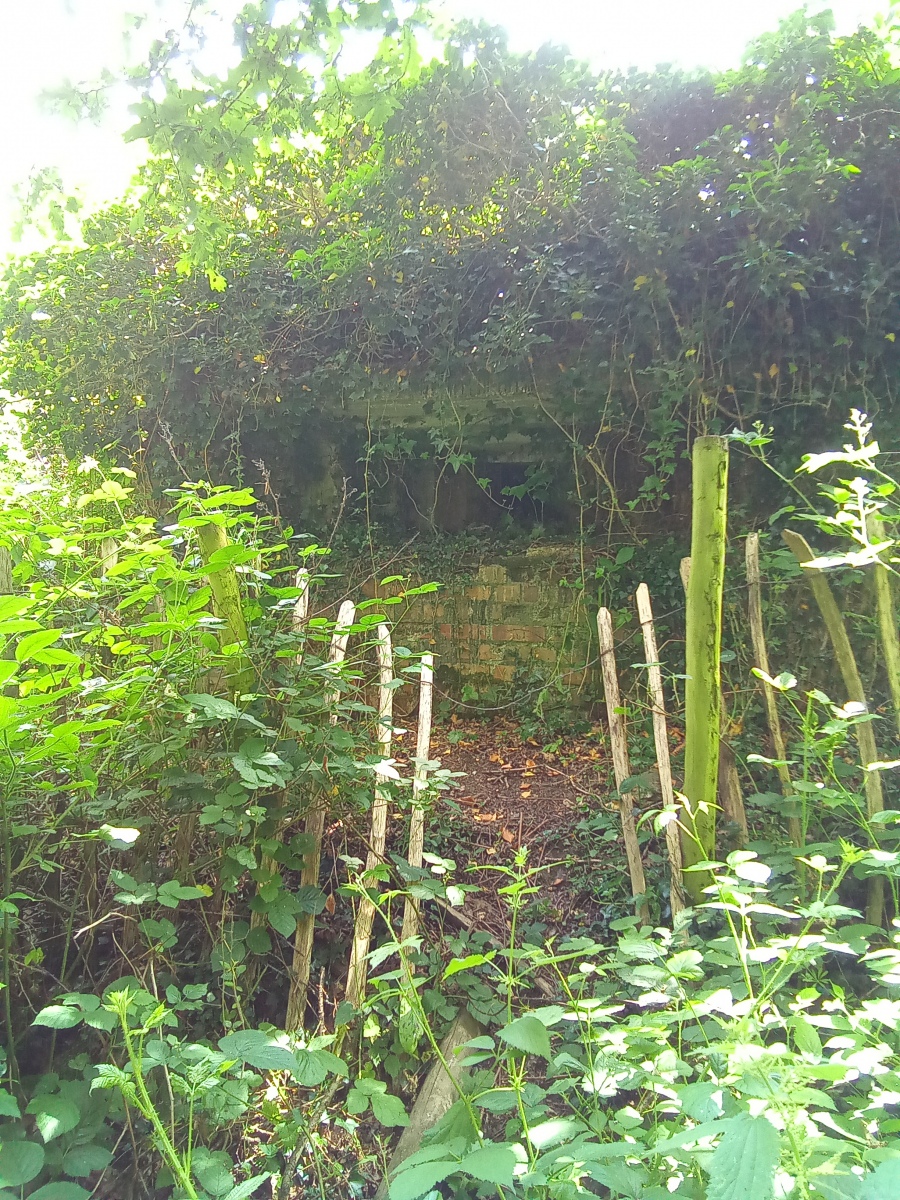Roughtally’s Wood Nature Reserve
Once part of North Weald Airfield, Roughtalley’s Wood is a relatively small nature reserve in North Weald. Although it is possible to walk around in a fairly short time, this really is worth spending some time exploring in order to absorb the incredible wealth of species found here. There are a surprising number of different habitats here which may not be large in size but they support some of our most specialised plant species which occur in few other places in the district. Roughtalley’s Wood was designated a local nature reserve in 2000 and is one of several smaller nature reserves within the North Weald Parish owned by Epping Forest District Council.
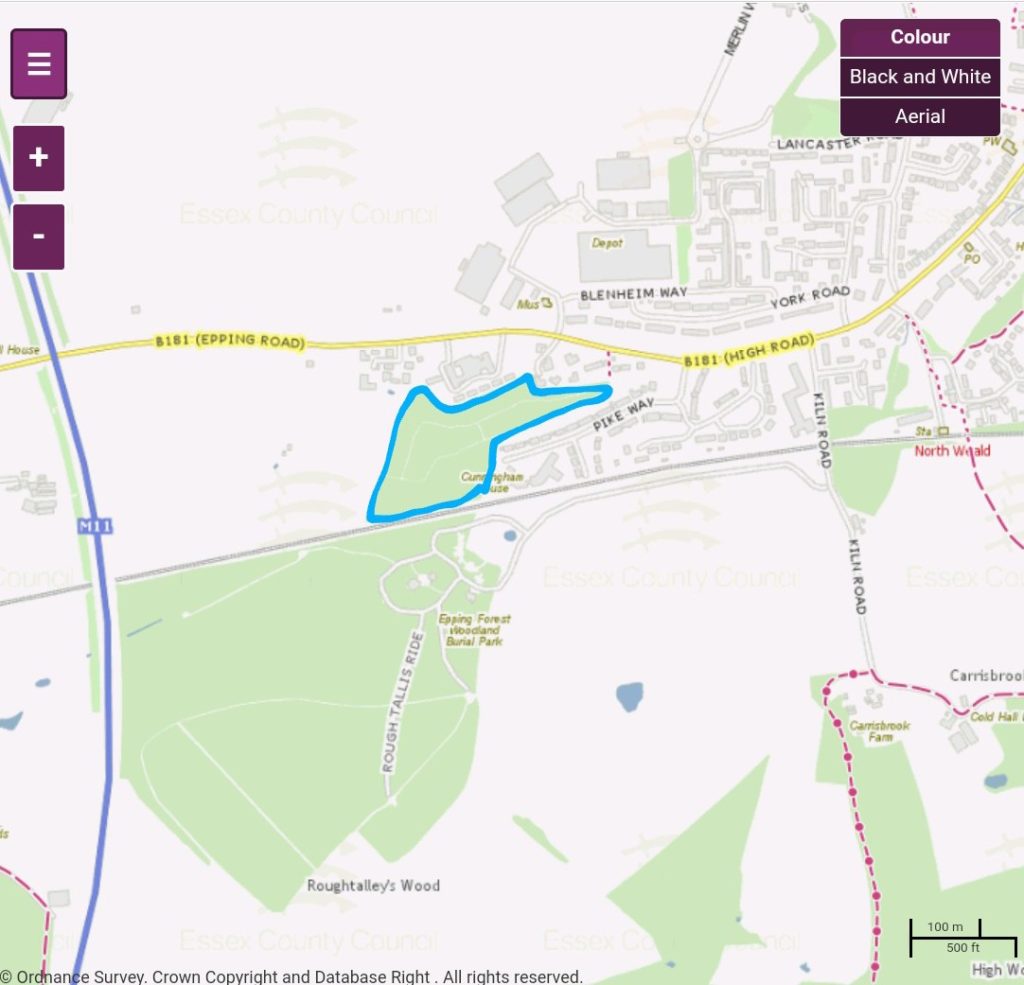
Ordnance survey map credit to Essex County Council
Roughtalley’s is a large piece of ancient woodland which was effectively cut in two by the arrival of the Epping to Ongar railway line extension in the early 1860’s. The larger section of the wood to the South of the railway is owned by the Gaynes Park private estate and right up until the 1990’s this was used by the commercial timber industry. This area is now the Epping Forest Burial ground, a natural cemetery which combines woodland and meadow burials with more the traditional internments. This change in use has opened the South woodland up for public access once again
The smaller section to the North of the railway is Roughtalley’s Wood nature reserve which is managed by Epping Forest Countrycare. This section is roughly cut in two by a stream forming two very distinct environments and divided into a number of different compartments, each of which have their own slightly unique habitat. One part is ancient woodland not too unlike Epping forest in being predominantly Oak and Hornbeam with an understory of Hazel and Hawthorn. The other part is broad leaved secondary woodland with a number of open woodland glades, ponds and seasonal wet meadow areas. It is here where some of the most endangered and rare plant species in Essex can be found.
It would usually be a challenge to find a location where just one or two species of wild Orchid grow side by side, but at Roughtalley’s Wood there are no fewer than four species. In this small nature reserve Common Spotted Orchid, Bee Orchid, Broad Leaved Helleborine Orchid and Pyramidal Orchid can all be found growing together. For such a small nature reserve this is an incredible number of Orchid species and shows just how ecologically specialised this nature reserve is. These are incredibly rare habitats which do not occur often and once lost can never be replaced.
There are a number of ponds in the wood, some of which are believed to be wartime bomb craters which have become naturalised. The reserve is managed for woodland and grassland as these habitats are vital for species that require both woodland and grassland during the different stages of their life cycles. The glades are kept open by cutting annually to maintain habitat for plants which depend on the clearings such as the wild Orchids. Butterflies such as the Silver Washed Fritillary also benefit as these glades form breeding territories in summer. These are strong fliers which can often be seen darting through clearings to chase away rivals then flying back up to the canopy. Some clearings are also occupied by patches of Bluebells, Snowdrops, Primroses and Cowslip among the more common woodland and glade plants.
Regular plant surveys are conducted which to date have recorded no fewer than 135 different species of flowering plants and grasses, and 35 different species of tree. Bramble and Nettle tend to be dominant species and are regularly managed to keep areas clear for species less able to compete. The pond areas have a good range of aquatic plants including a large colourful display of Marsh Marigold, and wild Mint. Ferns are also well established throughout the woodland and water courses. Annual counts of the four Orchid species show that conservation methods to improve the habitat for them are proving very successful. This is kept under constant review to ensure the methods used continue to have the desired effect on count numbers.
Animal surveys are incomplete but show that dozens of Bird species have been recorded. Amphibians are also well represented with Frogs, Toads and Newts. Slow Worms and Grass Snakes are also present. A large number of Rabbits are known to be resident on surrounding land and although they have helped control some of the more invasive grasses, they sometimes cause damage within the woodland. In the past barriers in the form of ‘dead hedges’ have proven successful in protecting the Helleborine Orchids from being grazed on. Occasional Muntjac and Badger have also been observed. At least 12 different species of woodland and meadow Butterfly and a great many more Moth species have been recorded and more than one type of Dragonfly. Further up to date animal and invertebrate studies are needed.
Management of the open glade and wooded habitats within the reserve are of critical importance as the site is effectively land locked by housing development on three sides and endangered species with a limited ability of movement would not easily be able to survive a local extinction enough to recolonize. As a result of this although it is one of the smallest nature reserves managed by Epping Forest Countrycare, it is much more dependant on regular conservation work. Different sections are managed according to age and the species they support, which is more labour intensive. The site is quite hidden away and previous questionnaires found that some local residents did not even know it existed. Regular volunteer projects have been undertaken to improve habitat and promote more awareness of Roughtalley’s Wood and its ecological importance as a local nature reserve. There are also opportunities to use the site for educational visits for local schools.
The main entrance is on Pike Way which is just off of Park Close on the B181 Epping Road in North Weald. On my visit a number of noisy Peacocks were perched on rooftops and parading around the estate. There is parking available in Pike Way but as always this should be done with consideration for local residents. Beside the gate is a visible reminder of the historic Airfield activity at the location in the form of a WW2 pillbox. At other nature reserves these are now gaining renewed interest as ideal hibernation facilities for Bats. There are also some areas where pieces of old foundations can be found among the trees which have now been colonised by rare wild Orchids.




